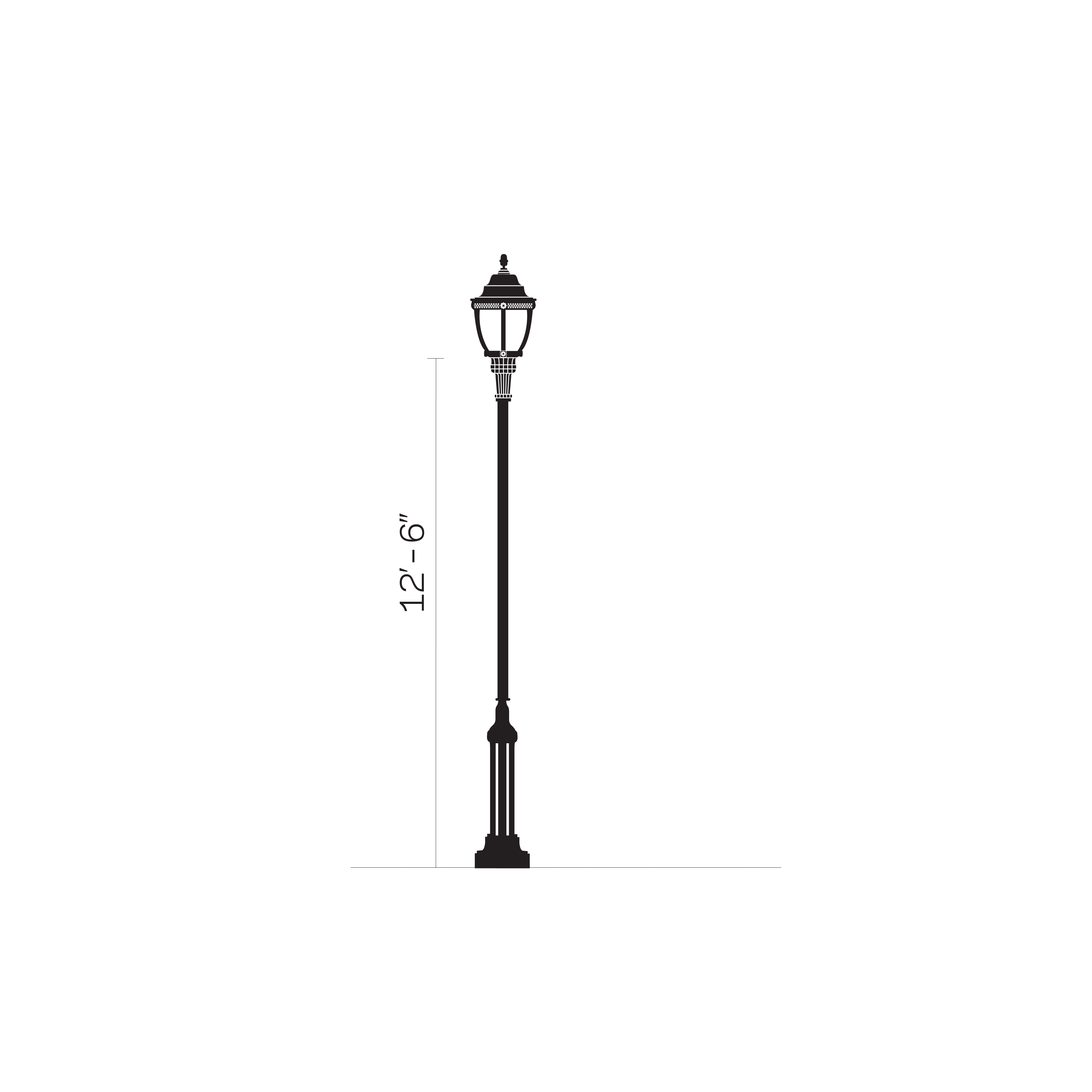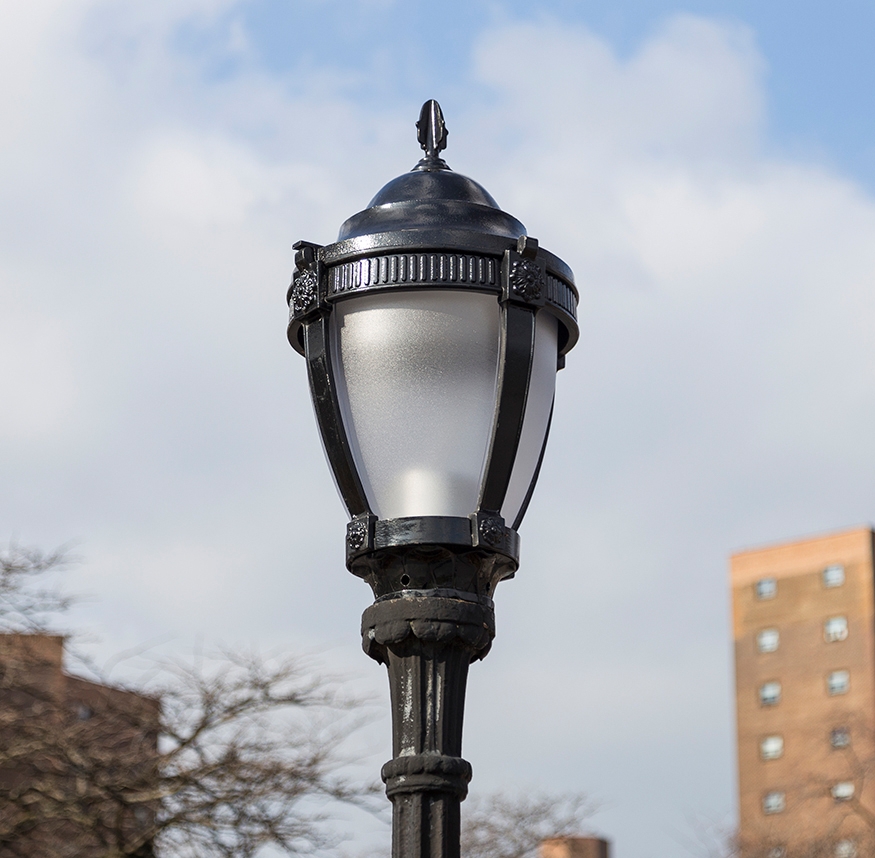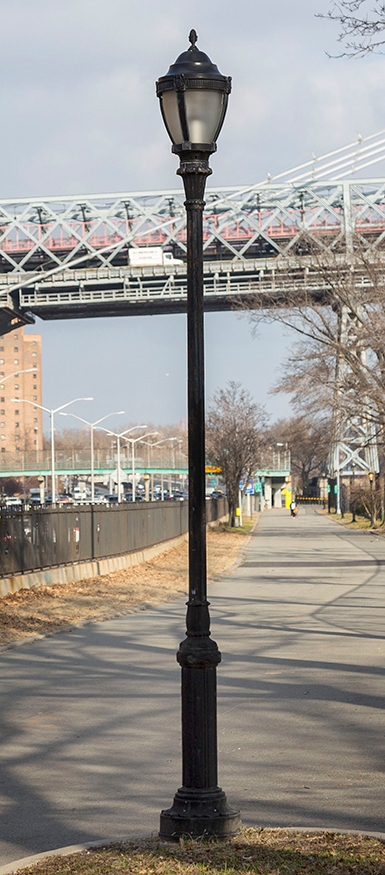Usage: Distinctive
The Type B pedestrian light was originally introduced in 1911 by designer Henry Bacon for the Central Park Mall and later installed in other city parks. The current version of the Type B pole was developed in the late twentieth century and offers a more traditional design for pedestrian areas such as parks and plazas.


Type B Pedestrian Pole

Pole with Riverside Park luminaire: East River Park, Manhattan
Applications
- Parks, plazas, esplanades, and pedestrian bridges
- Not suitable for use on roadways, except under elevated structures
- PDC approval is required
Luminaire
Riverside Park, Battery Park, Central Park, and 2085
- 76W maximum LED
- IES Type III or V
Material/Color
- Ductile iron pole/black
Cost Compared to Standard Street Light
- $$


